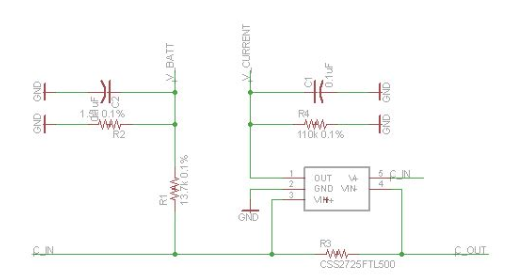Did it stabilize the pixhawk board voltage?
Hi Pomaroli,
I also use SLS batteries like you (the APL type though) and I had a quick look through my logs to see if I can come up with some comparison for you:
My config/logs:
Battery: 16Ah SLS APLs (12S, 20C rated)
Measurement: 180A current => 12C load -> 0,28V / cell
Your config/logs:
Battery: 4Ah SLS Magnum (4S, 45C rated)
Measurement 1: 40A current => 10C load => 0,26V drop / cell
Measurement 2: 46A current => 12C load => 0,32V drop / cell
Measurement 3: 107A current => 27C load => 0,88V drop /cell
Measurement 4: 180A current => 45C load => 1,5V drop/ cell
If we assume for a moment that the voltage measurement is actually working OK in your copter then I would think that your voltage sag might be more related to the load on the battery. A voltage drop under load is normal due to the internal resistance of the battery. My max load is 12C which leads to ~0,28V/cell drop in voltage. If you apply the same load on your battery (46A = 12C) you get a similar voltage drop of ~0,32V/cell.
The difference is that you are pushing your battery way further to the absolute max (180A => 45C) and thus are getting a bigger voltage drop (which is to be expected I think).
So, I guess what I am thinking is that there actually might not be an issue with your voltage measurement but rather you might have set your battery failsafe parameters a bit too conservative for your load conditions.
Are you aware that you can change the voltage at which the failsafe kicks in?
Battery chemistry says you must not go below 2.5V / cell or the battery will take irreversible damage chemically. So you need to be landed! when you reach 10V the very very latest (your voltage goes <10V at times), but if you want to push it you could set your failsafe to 3V / cell for example (=12V) which would allow roughly a peak current of 90A based on your logs. Or if you want to push it very close set it to 2.75V /cell (=11V FS threshold) which would make FS kick in at about ~115A. But then you have hardly any time to land after that… that would be too close for comfort for me.
I think many people use 3.5V/cell (so 14V for 4S) as the default FS threshold which is probably conservative for an acro drone.
You have FS_BATT VOLTAGE set at 13.1V that might mean you can only do ~70A with your battery config before FS kicks in… likely not enough for your needs.
I personally would try a bigger battery (say 8Ah) and see if that reduces the voltage drop…
Not sure if this is what you want to or can do but I thought I’d throw it out there…
Hello Christian, very interesting thanks. Your calculation sound plausible to me but on the other hand the Voltmeter measurments would lead to expect something different. i checked today the voltmeter to be sure it hasn’t any lag on Voltage change. Seems not to be. I spoken some time ago also to the guys from SLS they didn’t could explain the voltage drop, this Battery’s should hold long term 45C and peak of 80C. If you know SLS you know this guy’s don’t joking 
i’ve played a lot with the Battery failsafe voltage the problem there is that the FS is triggered based on the time the voltage is measured below the FS Voltage. BATT_VOLT_TIMER by default this is 10 seconds.
Im having a very similar issue!! I am using a 6s 22,000mah battery 5c
I have used many different power modules that support up to 90 amps, When im drawing about 30 amps i get a voltage drop of about 2v, Im also measuring it directly with a voltage-current meter before the power distribution (Matek FCHUB 12s) and that one only shows about 1v difference.
When there is no load both get the same voltage but for some reason under load the pixhawk voltage always drops more, and gets worse as voltage is dropping.
Anyone have a solution for this? Im waiting to get the mauch 100 delivered and try with that, but i doubt that will help as i have tried with 3 different power modules. 
I replied to your other post, but it sounds like the hardware you are using is a poor design.
You might be able to make your own voltage divider circuit based on the original 3DR sensor, a very standard text-book design. Ensure the voltage measurement is being taken from the battery side of the current sensor, not the load side.
Use metal film resistors.
For 6S I would suggest 1% resistors of 18k and 2.2k for 3.3v output, or the 3DR values will be fine too. The small capacitor is required.

